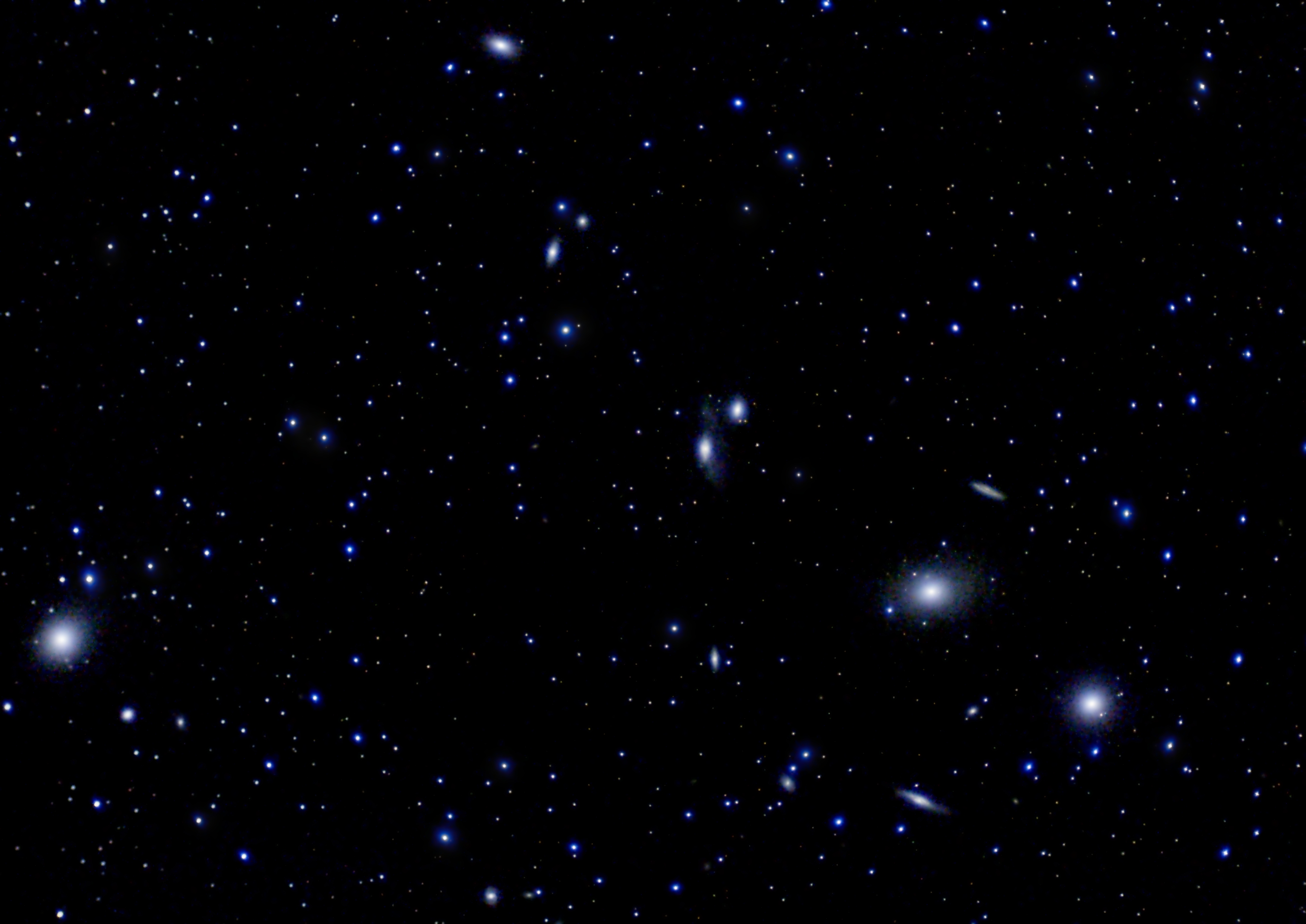May 2021
Imaging: ST120 achro, Canon 1000D 400ISO, NeodymiumSubs: 81x120s (2.7h), bias, darks, and flats
Processing: PixInsight
(Additional notes below)
Gallery
Notes
This is my image of the Markarian Chain, a stretch of galaxies that form part of the Virgo Cluster. This is from two sessions totaling 2.7h at the beginning of May 2021. It really needs more than double that but with rain and travel, this is all I will get. The galaxies are just noisy smudges but you can clearly see the "chain" formation. This is not accidental: galaxies are not randomly distributed but are rather found on filaments not unlike a spider web. The contemporaneous explanation is that dark matter first collapsed into these filaments and then gravity pulled regular matter into them to form the galaxies.To me, what is even more mesmerizing is not just the bigger foreground galaxies but just how many additional galaxies are in here. Try zooming in. Every fuzzy spot that is not a concentrated point of light of a star is a galaxy. Even in this low quality image, I can easily count 11 galaxies. Some good amateur astrophotos of this size show over 200!! Now for some more context. My image covers about 1° by 1.5°. How much sky is this? Well, it is about the size of your pinkie fingernail with your arm fully extended. So in that tiny amount of sky that you can cover up with you pinkie fingernail, there are 11 galaxies you can see with my scope, hundreds you can see with good amataeur scopes, and thousands with Hubble. And each of those galaxies has tens of billions of stars, and many thousands of those have a rocky planet in the habitable zone.
I think it is quite presumptuous to think we are the only advanced beings here, no?
